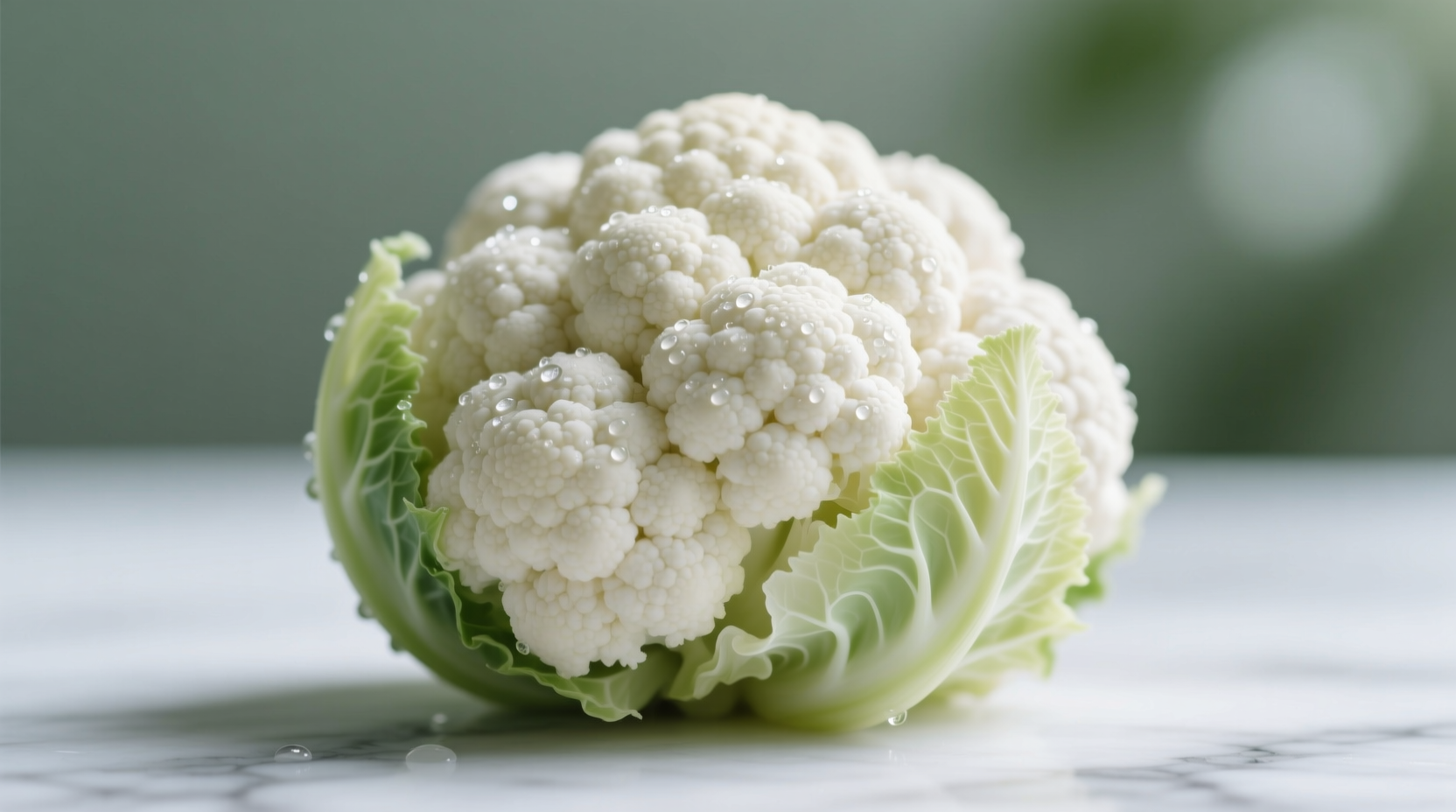Understanding cauliflower visually transforms how you select, prepare, and use this versatile vegetable. Whether you're shopping at the market, growing your own, or experimenting with new recipes, having clear visual references eliminates guesswork and elevates your culinary experience.
Why Visual Identification Matters for Cauliflower
Cauliflower's appearance directly indicates quality, freshness, and suitability for specific cooking methods. Unlike many vegetables, cauliflower has distinct visual markers that determine its culinary potential. Recognizing these characteristics helps you avoid common pitfalls like selecting over-mature heads or misjudging cooking times.
Essential Cauliflower Visual Categories
Raw Cauliflower Varieties Comparison
Not all cauliflower looks the same. Understanding the visual differences between varieties helps you choose the right type for your needs. The table below shows key visual characteristics:
| Variety | Color Characteristics | Head Shape | Best Culinary Uses |
|---|---|---|---|
| Traditional White | Compact ivory head with pale green leaves | Dome-shaped, tight curds | Ricing, roasting, mashing |
| Orange Cauliflower | Vibrant orange hue throughout | Slightly less compact than white | Steaming, soups, visual appeal |
| Purple Cauliflower | Deep purple florets fading to white | More open structure | Raw applications, quick cooking |
| Green Cauliflower (Romanesco) | Lime green with fractal patterns | Conical, pointed spirals | Grilling, roasting, visual dishes |
Growth Stage Timeline: From Seed to Harvest
Understanding cauliflower's visual development helps gardeners determine optimal harvest times. The progression follows these distinct visual stages:
- Weeks 1-3: Seedling emergence with two cotyledon leaves
- Weeks 4-6: True leaves forming, developing rosette pattern
- Weeks 7-9: Curd initiation - small white clusters appear
- Weeks 10-12: Curd development - compact head formation
- Weeks 13-15: Harvest window - tight, firm head with minimal separation
- Week 16+: Over-maturity - yellowing, separation, reduced quality
Professional growers emphasize that timing harvest based on visual cues prevents quality deterioration. The ideal head should be 6-8 inches in diameter with tight, clean curds and surrounding leaves still green and vibrant.
Culinary Transformation: How Cooking Changes Appearance

Watch how cauliflower transforms visually through different cooking methods:
- Raw: Crisp white (or colored) curds with firm texture
- Steamed (5-7 minutes): Slight translucency while maintaining structure
- Roasted (20-25 minutes): Golden brown edges with caramelized spots
- Riced (pulsed): Grain-like texture resembling rice
- Puréed: Smooth, creamy consistency similar to mashed potatoes
Practical Visual Assessment Guide
Market Selection Checklist
When selecting cauliflower, look for these visual indicators of quality:
- Color consistency: Uniform color without dark spots or yellowing
- Curds: Tight, compact florets with no separation
- Leaves: Fresh green outer leaves (if present) indicating recent harvest
- Stem: Moist but not wet or slimy cut surface
Context Boundaries: When Visual Identification Matters Most
Certain situations demand extra attention to cauliflower's visual characteristics:
- Gardening: Identifying proper harvest time prevents quality loss
- Recipe execution: Different dishes require specific visual doneness cues
- Food safety: Recognizing spoilage indicators prevents consumption of compromised produce
- Culinary presentation: Matching cauliflower appearance to dish aesthetics
Professional chefs note that visual assessment becomes particularly crucial when substituting cauliflower for traditional ingredients like rice or mashed potatoes. The visual transformation must match expectations for the dish to be successful.
Common Visual Misconceptions
Several visual myths persist about cauliflower that can lead to selection or preparation errors:
- Myth: Larger heads are always better quality
Reality: Oversized heads often indicate over-maturity with separated curds - Myth: Slight yellowing doesn't affect quality
Reality: Yellowing indicates age and reduced freshness, affecting both flavor and texture - Myth: All cauliflower varieties cook the same
Reality: Purple and orange varieties lose color when boiled but retain it when steamed or roasted
Practical Application: From Visual to Culinary Success
Applying visual knowledge transforms your cauliflower experience:
- When roasting, look for golden edges with slightly crisp tips as the visual doneness indicator
- For cauliflower rice, proper texture shows individual grain-like pieces without mushiness
- When making mashed "potatoes," the ideal consistency resembles traditional mashed potatoes visually
- Gardeners should harvest when the head reaches 6-8 inches with tight curds for optimal quality
Professional food photographers emphasize that understanding these visual transformations helps home cooks achieve restaurant-quality results consistently. The visual cues serve as your most reliable guide throughout the cooking process.











 浙公网安备
33010002000092号
浙公网安备
33010002000092号 浙B2-20120091-4
浙B2-20120091-4